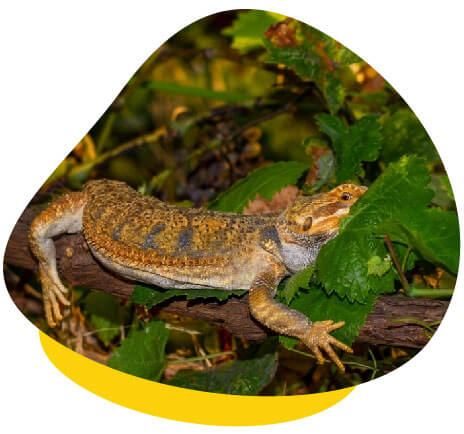

The way to save money on glass tanks is to buy second-hand ones from aquarists. Secondly, a large tank will cost you significantly more than a smaller one, mostly because it has to be made out of thicker glass. With this in mind, let’s shed a light on a couple of issues lurking if you intend to use a glass tank only.įirst, the larger the glass tank is, the more prone it is to breaking. However, for adult bearded dragons, you will need quite a large cage, with the ideal volume being 120 gallons ( ~450 liters). They are not as prone to scratching as plastic tanks. They offer high visibility and are easy to disinfect. Let’s find out what types of tanks you can utilize for a bearded dragon enclosure. Type of Tank for a Bearded Dragonĭid you know that tank itself can be made of different materials and that some are more suited for bearded dragons than others? You can go wild with decorations later when you set up his adult cage. You can find more details on each of these components below.Īs a general rule, keep juvenile enclosures minimalist, as this will prevent crickets and other feeder insects to hide from your pet.

Incandescent heat bulb within a clamp lamp + Linear fluorescent UV bulb.Simple flooring (tiles, paper towels, newspapers).Let’s see what you need to house your little beardie: For small babies, a 20-gallon tank is enough. Juvenile enclosureĪ juvenile enclosure is a tank your beardie will be housed in before he reaches his adult size. Hence, they need relatively large terrariums. Adult bearded dragons are of moderate size but are still quite bulky and active. With adults, you can go with a full, large desert vivarium setup. If you are getting a juvenile, you will house him in a smaller, simpler setup until he grows up. Tank size will depend on the age and size of your beardie. > Further Reading: The Bearded Dragon Behavior (Common & Unusual) & Health Tank Size and Type for Bearded Dragons Also, they require an additional UV light source – UVA and especially UVB light is necessary for proper metabolism and bone development of your pet.

Beardies like and require a bright light above their tank, which will keep them warm and alert.High humidity – above 65% – can cause deadly pulmonary disease in your pets. Bearded dragons have evolved to breathe air that is relatively dry. However, even if you don’t go wild with sand substrate and elaborate desert-like decorations, there are certainly some principles of desert setup you need to respect: Note that not all features of a typical desert vivarium setup are appropriate for beardies, especially the young ones. The Bearded Dragon Tank: What Type of Enclosure Should You Use?Īccording to what we can find in bearded dragon natural habitat, we can conclude the best-suited match in captivity is a desert type terrarium. Water is scarcely available, but it is well-utilized when it does accumulate. Diverse vegetation doesn’t really thrive, but there are still plenty of desert bushes and small trees suitable for hiding and climbing. The bearded dragon habitat is arid areas of Australia, where vegetation is scarce, and the ground is mostly in the form of dry, hardened soil, rock and some loose soil and sand. 75-120 gallons (280-455L) for adults: the bigger, the better!.about 50 gallons (190L) for young adults.20-50 gallons (75-190L) for hatchlings juveniles.Further Reading: The Complete Bearded Dragon Care Sheet The Bearded Dragon Setup in Short Tank size


 0 kommentar(er)
0 kommentar(er)
